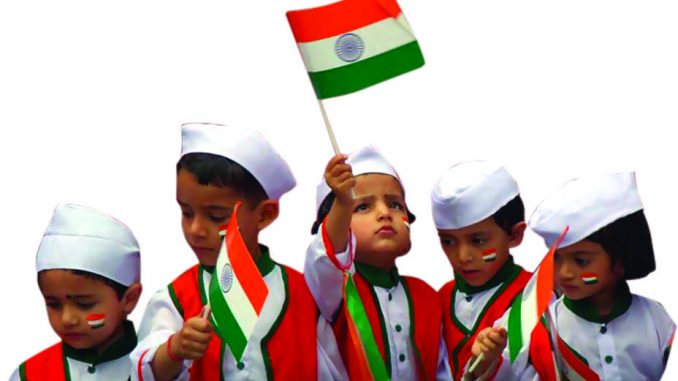
By
India began its journey on 15 August 1947 into an era of independent times through the instrument of democracy. From the centuries of colonial rule and historic injustice done by foreign powers, India had to move towards progress to survive as a nation.
Our founding fathers were posed with a variety of challenges, as they were to satisfy the rising aspirations of a new India, and carry out the required socio-economic development of the country. Therefore they decided to go with the parliamentary system and mixed economic setup to achieve the ideals of a welfare state.
Now 70 years have passed, and the present time demands an objective performance evaluation of India’s progress. Therefore I will try my best to carry out an elaborate analysis of India in making.
Since at the times of independence, Indian masses were mostly illiterate, poverty-ridden and backward, their development became the topmost priority and the government committed itself to uplifting the masses.
And the past decades have shown that India has been able to make quite a good record in this regard, as it lowered its neo-natal mortality rates and infant mortality rates, and raised life expectancy levels to 66.1 years. From the levels of 18% literacy rate in the 1950s, India has improved its literacy rate to 74.1% as per census 2011. It has expanded the scope of health and education coverage to all sections of society. India, through green revolution, achieved self-reliance in food production.
But we are still lacking in providing universal access to healthcare (especially to the poorer sections). About 25% of our population is still outside education coverage, and those covered are lacking in skill capabilities. India is still burdened with social evils like gender inequality, communalism and regionalism that hamper the security and peace.
On the economic front, India had to undo the “economic drain” carried out by Britishers, bring out economic development by increasing its GDP, achieve financial inclusion for all, and develop an industrial base to sustain the growing population.
For this, India carried out various reforms and measures that made India one of the fastest growing economies in the world (7-8%) and a leader in the international market. India has also expanded its volume of trade as made evident by large forex reserves which recently crossed the $400 billion mark. Through nationalisation of banks, India converted class banking into mass banking.
But again, this success has been partial, as India is riding high on jobless growth. We are witnessing economic slowdowns across sectors, and the increasing proliferation of black money. Infrastructural failure has ensured that India is unable to tap the potential of its demographic dividend, which has led to a demographic crisis.
In other aspects, on one side India’s success lies in the fact that it has been able to conduct free and fair elections, indegenise space technology, uphold the integrity of nation despite regional differences, and provide a pathway for non-state players like NGOs and CSOs to be a part of the developmental process. On the other side, India is witnessing high crime rates, environmental degradation, crony capitalism, restrictions on freedom of speech and expression. This uncivilized growth has stopped the nation’s move towards a mature democracy.
Now for most of these reasons, it can be said that that the main problem lies in the fundamental breach of constitutional provisions and the methods of governance, which ignores the most significant authority in the country i.e. the sovereignty of the people. In short, it seems that India has tried and improved in many aspects, but looking at the timeframe of 70 years, these improvements seem insignificant as compared to countries like Russia and Japan which became prosperous global powers in a shorter time.
Lastly, the Indian experiment can be called a demonstration of partial success, thus according to me India at 70 is a battle half-won. We still have a long way to go.
Source: Youth Ki Awaaz

Leave a Reply